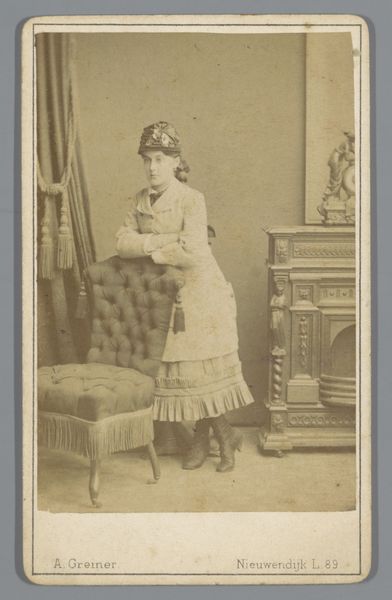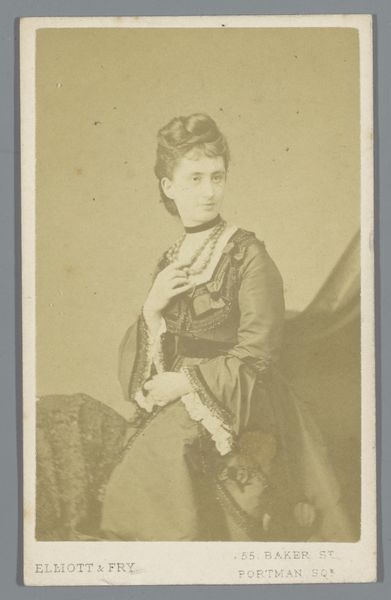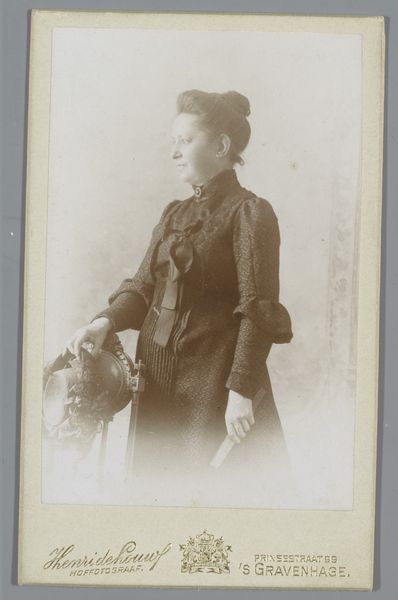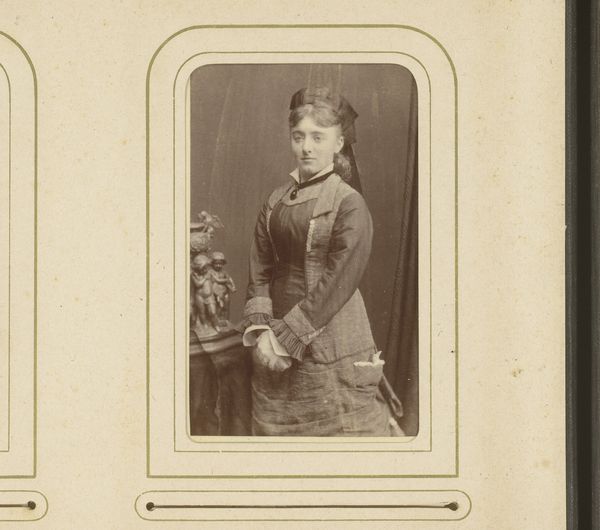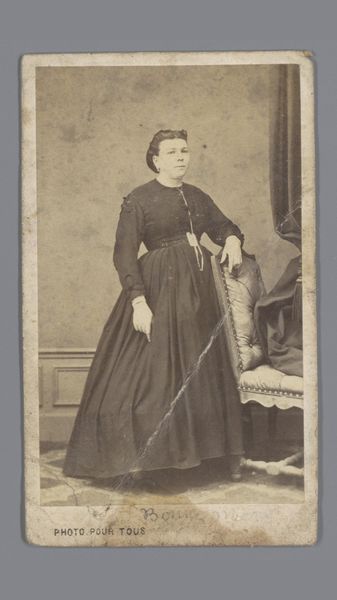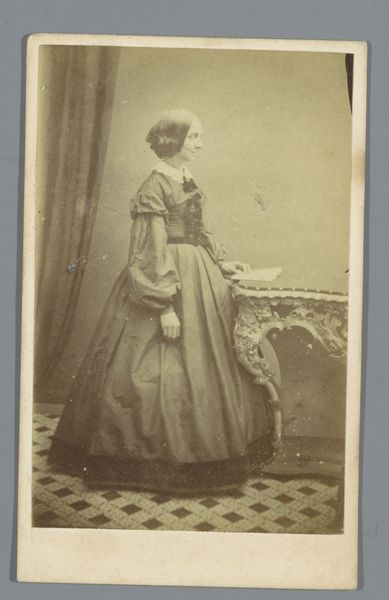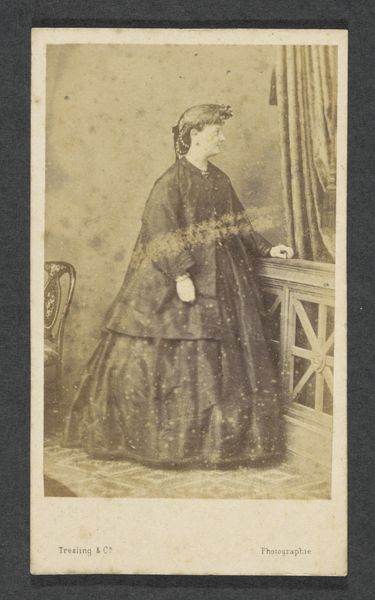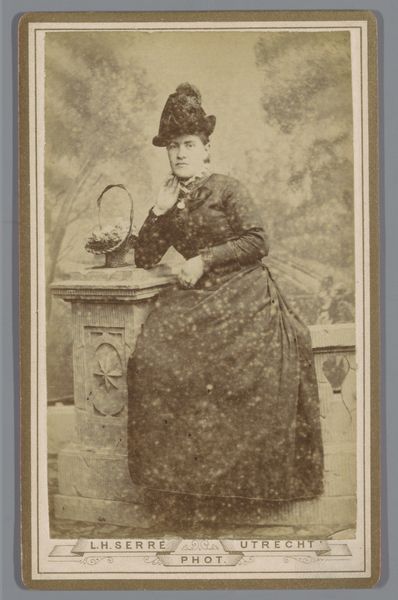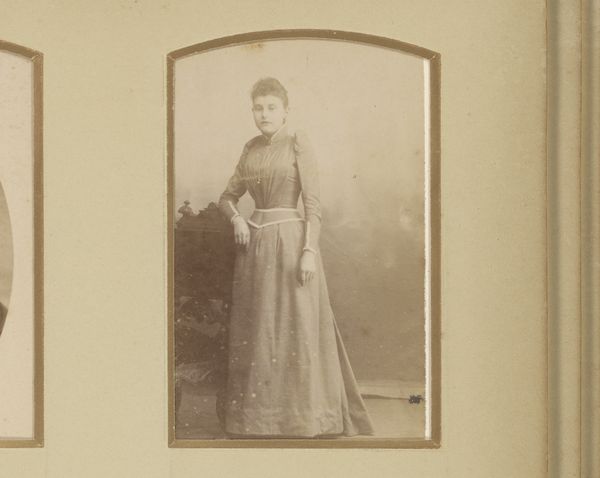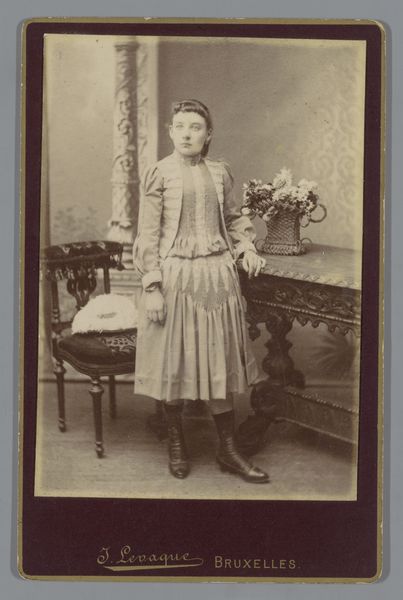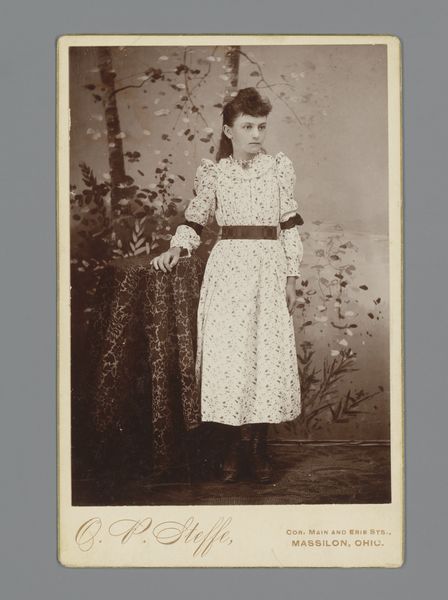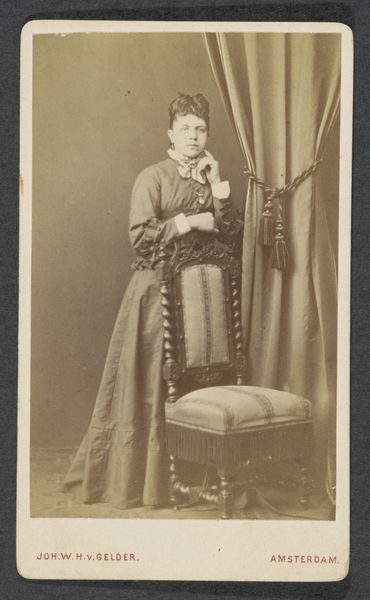
daguerreotype, photography
#
portrait
#
daguerreotype
#
photography
#
historical fashion
Dimensions: height 105 mm, width 63 mm
Copyright: Rijks Museum: Open Domain
Curator: Here we have an 1866-1890 daguerreotype portrait from Bertall et Cie. The work is called "Portret van een onbekende vrouw in een rok met een queu," or "Portrait of an Unknown Woman in a Skirt with a Train". Editor: The sepia tones give it such a lovely nostalgic air. I immediately notice how her dress, the fabric, practically defines the composition, dominating the space. Curator: Absolutely. And it’s not just visual. Clothing in this era signaled so much about status, respectability. Think about the layers, the structured silhouette…each piece communicates something. Editor: It speaks volumes about labor too. Look at the details in that skirt – the ruching, the train. That wasn't mass produced; it demanded hours of meticulous work, probably by someone less privileged. The fabric itself, though, looks quite simple and durable. Curator: True. This "queu" or train was also quite important. The length wasn't about everyday utility. The impracticality signified affluence; you couldn't really perform physical labor easily in that style of dress, can you. Editor: It’s fascinating to think about how photography itself was still fairly novel then, altering representation. The sitter appears almost self-conscious. Curator: It really was, a mirror reflecting a changing society and changing perception of status. Photography helped popularize fashion trends to all social classes like never before. This also gave sitters like this unknown woman the possibility of some level of status previously enjoyed only by elites commissioning painters. Editor: Interesting… so it could be considered as a proto form of fast fashion dissemination or aspirational material culture… And the very materials—the chemicals, the plate itself—encode that historical context. Curator: Precisely. So this small portrait, while formally very simple, encapsulates significant social symbolism about how one navigates public image. Editor: Makes you wonder about the true value embedded within it... the human and material capital consumed. Curator: And that makes the portrait even more impactful and timeless. Editor: Indeed. A little memento capturing a whole complex world.
Comments
No comments
Be the first to comment and join the conversation on the ultimate creative platform.
